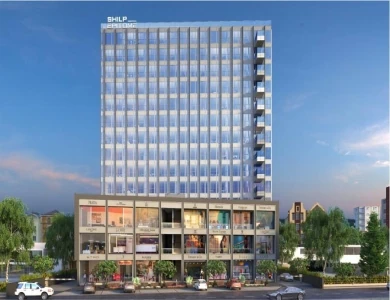
In the current global shift towards more sustainable practices, the notion of green buildings stands as a fundamental pillar of contemporary construction and urban design.
Nevertheless, an in-depth understanding of what constitutes a green building and the reasons for its significance is crucial.
In this blog, we'll explore the definition, importance, and advantages of green buildings, shedding light on why they are essential for a sustainable future.
What is a Green Building?
A green building, also known as a sustainable building or eco-friendly building, is a structure designed, constructed, and operated in an environmentally responsible and resource-efficient manner.
The concept of a green building extends beyond just the physical structure—it encompasses the entire lifecycle of the building, from site selection, design, construction, operation, maintenance, renovation, and even demolition.
Key features of a green building include:
Utilizing energy-efficient appliances, lighting, and HVAC systems to reduce energy consumption.
Implementing water-saving fixtures, rainwater harvesting systems, and wastewater treatment technologies.
Using recycled, renewable, and non-toxic materials that have minimal environmental impact.
Ensuring good indoor air quality, natural lighting, and ventilation to create a healthy living or working environment.
Reducing, reusing, and recycling construction and demolition waste to minimize landfill contributions.
Selecting sites that minimize environmental disruption and integrating the building into its natural surroundings.
The Importance of Green Buildings
The significance of green buildings extends far beyond their environmental benefits. As the global population grows and urbanization accelerates, the demand for energy and resources intensifies.
Traditional construction methods and building operations are major contributors to environmental degradation, including greenhouse gas emissions, deforestation, and pollution.
Green buildings offer a solution to these challenges by promoting sustainability in the following ways: 1. Reducing Carbon Footprint
Green buildings are designed to minimize energy consumption, which reduces the carbon footprint of both the construction process and the building's operation. This is crucial in combating climate change and achieving global carbon reduction targets. 2. Conserving Resources
By using water and energy more efficiently, green buildings help conserve precious natural resources, ensuring their availability for future generations. 3. Enhancing Human Health
Green buildings prioritize indoor environmental quality, which can improve the health and well-being of occupants. Better air quality, natural light, and reduced exposure to toxic materials contribute to a healthier living and working environment. 4. Economic Benefits
While the initial cost of constructing a green building may be higher, the long-term savings in energy, water, and maintenance costs make it a financially viable option. Additionally, green buildings often have higher property values and attract eco-conscious tenants or buyers.
Advantages of Constructing Green Buildings
The advantages of constructing green buildings are manifold, benefiting not only the environment but also society and the economy. Here are some of the key advantages:
Green buildings produce fewer greenhouse gases and other pollutants, contributing to cleaner air and a healthier planet.
Sustainable building practices reduce the consumption of energy, water, and raw materials, preserving natural resources.
By recycling materials and minimizing waste during construction, green buildings help reduce the burden on landfills and lower overall waste production.
Green buildings are energy-efficient, leading to significant savings on utility bills. Over time, the reduced operational costs can offset the initial investment in sustainable technologies.
Green buildings are in high demand among environmentally conscious consumers and businesses. This can lead to higher property values and rental rates.
The green building industry creates jobs in the fields of sustainable design, construction, and maintenance, contributing to economic growth.
The emphasis on indoor environmental quality in green buildings leads to healthier living and working conditions, reducing the risk of respiratory problems and other health issues.
Green buildings often incorporate features that promote social interaction and community engagement, such as green spaces, communal areas, and sustainable transportation options.
Green buildings are designed to be resilient, with features that protect against extreme weather events and other climate-related challenges, ensuring long-term safety and comfort for occupants.
Conclusion
Green buildings represent a vital step towards a more sustainable and resilient future. By adopting eco-friendly construction practices and prioritizing resource efficiency, we can create buildings that not only reduce environmental impact but also enhance human health, save money, and foster stronger communities.
As the demand for sustainable living continues to grow, the construction of green buildings will play an increasingly important role in shaping the cities of tomorrow. Investing in green buildings is not just a commitment to the environment—it's a commitment to a better quality of life for everyone.
If you want to save your future with the high ROI by investing in the best of real estate properties. Contact RES Management and get to invest in properties with the highest yielding returns.





